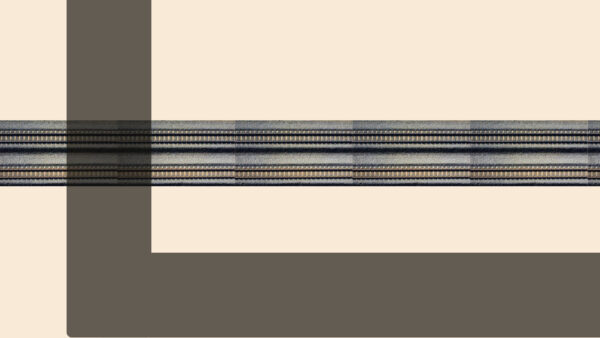Iraqi engineers involved in building Mosul dam 30 years ago have painted a catastrophic picture of its imminent collapse, saying the death toll from a 20-m-high flood wave could reach one million.
The Iraqi government has urged people to move 3.5 miles away from the river Tigris as fears of collapse grow.
It is going from bad to worse, and it is urgent. All we can do is hold our hearts– Nasrat Adamo, former chief engineer
Engineers say pressure on the dam’s compromised structure is increasing rapidly as winter snows melt and flow into the reservoir, while sluice gates that can relieve the pressure are jammed shut.
Failure to replace machinery or assemble a full maintenance team more than a year after Islamic State temporarily held the dam means that openings in the porous rock under the dam were getting bigger every day, they told The Guardian newspaper.
“We used to have 300 people working 24 hours in three shifts but very few of these workers have come back. There are perhaps 30 people there now,” said Nasrat Adamo, the dam’s former chief engineer, who spent much of his career shoring the dam up against construction flaws. The dam, formerly known as ‘Saddam Dam’, was finished in 1986.
“The machines for grouting have been looted. There is no cement supply. They can do nothing. It is going from bad to worse, and it is urgent. All we can do is hold our hearts,” Adamo told The Guardian in a telephone interview from Sweden, where he now works as a consultant.
He said the structure would only survive with teams working round-the-clock filling holes in the bedrock.
The Iraqi government on 28 February urged residents of Mosul, Iraq’s second biggest city, to move at least 3.5 miles away from the river.
Some people say there could be half a million people killed, some say a million. I imagine it will be more in the absence of a good evacuation plan– Nadhir al-Ansari, Iraqi engineer
The Iraqi prime minister and the US Embassy in Baghdad both issued urgent warnings about the possibility of the dam collapsing and sending a 20-metre-high flash flood, putting more than a million people at risk.
Speaking to The Guardian, Nasrat Adamo and other engineers warned that the loss of life from a collapse could be even greater than the government’s estimate of 500,000 because many people would die in the resulting mass panic.
Nadhir al-Ansari, another Iraqi engineer who worked on the dam, said the water levels in the reservoir are reaching critical levels, while the dam’s structure is weaker than ever.
“If the dam fails, the water will arrive in Mosul in four hours,” he said. “It will arrive in Baghdad in 45 hours. Some people say there could be half a million people killed, some say a million. I imagine it will be more in the absence of a good evacuation plan.”
Last month Italian ground engineer and dam specialist Trevi announced that it had been chosen by Iraq’s Council of Ministers on an emergency basis to undertake maintenance on the dam.
Photograph: Aerial view of the Mosul dam and reservoir in 2014. Engineers say the structure’s integrity is fatally compromised while water levels are reaching critical levels (Ali Haidar Khan/Wikimedia Commons)
Comments
Comments are closed.







These are my recommendations which may or may not be possible: (A) make use of very heavy duty hydraulic jacks in order to very slowly release and slowly lift each sluice gate in small pre-calculated stages so to release water out of the dam in gradual stages so as to relieve the present excess water pressure on the dam wall! (B) Naturally should this above measure work: the river will no doubt begin to flood and thus all persons in proximity to the banks of the river will have to be progressively evacuated to higher ground to ensure their safety and be kept their in temporary shelters until all danger has been eliminated. (C) Once all the sluice gates have been fully opened and thus all the excess water thus released from the dam and into the river then bring only the willing ,big and strong worker in urgent and sufficient numbers to effectively plug all these leak holes in the bed rock until all are completely sealed! (D) Then cut free and lift by mobile crane and thus remove each and every sluice gate to safe storage on high ground above and beyond the dam wall! (E) Immediately seek out a more suitable rock bed ,plan and build a much more stronger and durable new dam while leaving the old one in place for the memory!!!
Having googled Mosul Dam I find it is a very large rock fill gravity retaining structural dam with an independent large capacity flood control deep sluice gated concrete canal having six large steel sluice gates! Then on the opposite side of the dam wall close to a water intake tower is a concrete structure which houses a further nine sluice gates, three of which if open will release via three water releasing pipes which extend down through the dam wall to the very opposite base of the dam wall which when open will also constantly release water out of the dam itself ! Then a further six sluice gates should always be open in any case because the pipes leading from them lead down into six hidro electric turbine chambers to generate essential electricity to power Mosul and smaller towns! So lifting all the sluice gates using Hydraulic jacks all as before is about 50% of the answer the other 50% which is less costly than building a new dam is to seal the entire water exposed aspect and even further than the base of the dam wall with a mixed fine clay and sand layer waterproofed over with a dam lining quality hyperlastic PVC seamless sheeting to stop the ongoing water erosion in both the bedrock and the dam wall itself!!!
Comment! O one more thing used sufficient amounts of rust destroying release fluid on all the points of contact of each and every jambed sluice gate before applying the use of the hydraulic jacks as I previously suggested! O and pray it works – do lots of praying!!!
Oh ,will the CEO of Global Construction please pass on all of my last three comments as constructive suggestions to Mr Nasrat Adamo and all his associate Engineers for their due consideration, possible further improvement there on and successful funding and execution with all the high urgency impacting on this life threatening matter!!! Many Thanks, J.S.
I’ve been reading various suggestions about how the Mosul Dam could be secured from collapse. I’ve also been reading how it is effectively in a war zone. The essential maintenance equipment has been stolen by insurgents and the sluices are jammed with no current means of unjamming them nor engineers available to do this.
There is also the problem of how quickly the reservoir could be emptied without flooding Mosul and other places downstream. Even reducing the pressure on the leaking dam could destabilise the structure which is founded on dissolving rock which is not being stabilised by grouting as above.
If the dam breaches, the resulting disastrous flood will also impact Baghdad, hence the predicted likely death toll in seven figures. International effort will be difficult to organise in this disputed war zone and any military action is only likely to make the situation more dangerous.
As soon as possible- yesterday- someone should have blown some carefully calculated holes in those flood gates to release water as quickly as possible down to a safe elevation. Hole one gate at a time until the right Q is achieved. The longer you wait, the higher the Q you need and the less safe this would be.
Build a new and functional flood gate if the dam ever gets rehabilitated.
Would it not be sensible to concentrate on relieving the pressure on the dam by lowering the water level behind the Dam. If the sluices are inoperable or not coping, one could use a simple system of large diameter pipework across the top of the dam into which you feed water in turn to the lower side to start the siphon system. Once running it will be self sustaining down to the intake level set. It could me made as large as the pipework available and the lower the outlet below the head of water, the greater the flow rate. All that would be needed is some large diameter pipework, preferably flexible, a few valves and a priming pump to start it off. Not really rocket science, just some ingenuity a crane, excavator, some pipes, a pump and manpower etc.